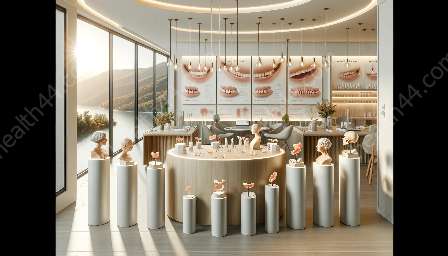As we age, bone resorption can lead to significant changes in the fit and comfort of dentures. This article explores the relationship between bone resorption, denture fit, and denture relining techniques, offering insights into how to address these challenges effectively.
Understanding Bone Resorption
Bone resorption is a natural process in which the body reabsorbs bone tissue, resulting in the loss of bone volume. When it comes to denture wearers, bone resorption commonly occurs in the jawbone due to the absence of natural tooth roots. This ongoing bone loss can lead to significant changes in the shape and density of the jawbone over time, impacting the fit and stability of dentures.
Effects of Bone Resorption on Denture Fit
As bone resorption progresses, the underlying structure of the jawbone changes, leading to a loss of support for the overlying dentures. This can result in a loose or ill-fitting denture that causes discomfort, difficulty in chewing, and speech issues. Additionally, the changes in bone volume can lead to the appearance of premature aging and facial sagging, impacting the overall appearance of the individual.
The effects of bone resorption on denture fit should not be overlooked, as they can significantly affect the quality of life for denture wearers. Fortunately, denture relining offers a valuable solution to address these challenges.
Denture Relining Techniques
Denture relining is a process that involves modifying the inner surface of the denture to improve its fit and comfort. There are different techniques available for denture relining, each aiming to restore proper adaptation to the changing contours of the jawbone. Understanding denture relining techniques is crucial for dental professionals and denture wearers alike.
Soft Reline
Soft relining involves the use of a pliable material to provide cushioning and adaptability to the denture base. This technique is particularly suitable for individuals with sensitive or resorbed ridges, as it helps distribute the pressure more evenly and enhance comfort.
Hard Reline
Hard relining utilizes a more durable material that closely conforms to the shape of the jawbone. This technique offers a more long-term solution for improving denture fit and stability, especially when significant bone resorption has occurred.
Temporary Reline
Temporary relining involves the application of a short-term material to address immediate fit issues. It serves as a temporary fix until a more permanent solution, such as hard relining, can be performed.
Addressing Bone Resorption through Denture Relining
Denture relining plays a crucial role in addressing the impact of bone resorption on denture fit. By utilizing the appropriate relining technique, dental professionals can restore proper adaptation of the denture to the changing jawbone contours, improving stability and comfort for the wearer.
It is essential for denture wearers to regularly visit their dentist for evaluations, as timely relining can help prevent the adverse effects of ill-fitting dentures due to bone resorption. Proper maintenance and relining of dentures can significantly enhance the overall quality of life for individuals relying on dental prosthetics.
Conclusion
Bone resorption can have a profound impact on the fit and stability of dentures, leading to discomfort and functional difficulties for wearers. Understanding the effects of bone resorption and the role of denture relining techniques is essential for addressing these challenges effectively. Denture wearers and dental professionals must work together to mitigate the impact of bone resorption through timely relining, ensuring the continued comfort and functionality of dentures.


